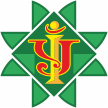Belarusians Contributing to the World Science and Technology Development (Georgy Lakhovsky)
The name of Georgy Lakhovsky is almost unknown in Belarus. Foreign sources refer to him as a world-famous Russian or French scientist, inventor, mechanic, radio engineer, doctor, philosopher, author of numerous books.
Georgy Lakhovsky was born on September 17, 1869 in the village of Ilya, Vileika district, Minsk province, in a family of teachers.
His inventive talent was discovered in childhood – at the age of 6 he designed a water mill. From the age of 12, the boy studied at school in Minsk, and at 18 he entered the Odessa School of Arts and Crafts. In December 1894, the young man became a student at the Sorbonne, where he studied physics and the secrets of building bridges and roads, as well as human anatomy and physiology at the Faculty of Medicine of the University of Paris. Having got into a railway accident, he decides to investigate its causes. It all resulted in coming up with new engineering ideas for improving the fastening of rails to sleepers. His ideas were accepted and, thus, he got a job in Paris.
Since the beginning of war in 1914, G. Lakhovsky served in a number of French missions, and then decided to devote himself entirely to science. He explored the possibilities of wireless telephony, got acquainted with one of the inventors of radio, the Nobel Prize winner in physics in 1909, Guglielmo Marconi (Italy) and the famous physicist and physiotherapist Arsene d'Arsonval (France).
However, as it turned out later, this was not the direction that truly captivated the scientist. He got more and more concerned about fundamental problems of relationship between scientific discoveries in the field of electromagnetism and the laws of life of a living being, which made him deepen his knowledge in physics, histology, biology, physiology, and especially in cell biology.
Being influenced by his disease, Lakhovsky began to research the problem of cancer. He studied medicine, and he started to develop the theory of a cancer cell, trying to apply the ideas of physical fields to a living cellular structure. He generated a hypothesis about cellular oscillations and, being an engineer, decided to test at the physical level the effect of short electromagnetic waves on biological objects. Thus, he came to his world-famous theory of cell oscillation, thanks to which he became one of the pioneers of the theory of radiation biocommunication, and in 1923 he designed a short-wave oscillator that proved his theory.
The essence of Lakhovsky's theory was that a cell is a microscopic oscillatory circuit. Lakhovsky was sure that such a process takes place in the tiny nucleus of the cell. And the small twisted fibers of the core are like an electric oscillating circuit. In 1923, Lakhovsky developed an electrical device called a "cellular radioemitter", for which patents were issued by the French and German patent offices.
Lakhovsky described a series of remarkable experiments that proved the idea that the cause of the disease is actually an imbalance in cellular vibrations. To restore a diseased cell, it is necessary to return it to its natural vibration frequency with the help of artificial external radiation.
In 1924-1925. Lakhovsky was working on improving multi-electrode radio tubes for aircrafts. At that time, radio broadcasting became more and more demanded, but the sound quality remained very low. It was Lakhovsky who proposed new technical solutions to improve the quality of the loudspeakers and was granted six patents.
In 1931, Lakhovsky registered the invention of the multi-wavelength generator, which he Georgy Lakhovsky achieved significant success in the treatment of cancer. His determined audacity to devote himself to science unexpectedly yielded results, and his illness receded. Following this massive success, Lakhovsky founded the Colysa company, which manufactured and sold his devices.
Lakhovsky, of course, wanted to confirm his conclusions in practice. He received permission from the leadership of several Parisian hospitals to participate in the treatment of cancer patients, and made significant progress – the condition of the patients improved, some of them fully recovered.
In 1934 Georgy Lakhovsky successfully presented his ideas and practical proposals at the I International Congress of Radiobiology in Venice. The scientist continued to deal with issues of treatment of people, as well as animals and plants, his approaches are spreading in other countries besides France, including Italy, Sweden, Brazil. During World War II, the anti-racist views of Georgy Lakhovsky, set forth in the books "Racism", "Civilization and Racist Madness", came into great conflict with the ideology of the new government. In 1941, Lakhovsky was forced to emigrate to the United States because of his anti-fascist views. Several New York hospitals agreed to test the device created by the scientist, and the results of their use were quite impressive. All plans for the development of a new method of treatment in America were thwarted by the tragic death of the scientist: in New York he was hit by a limousine, and three days later, on August 31, 1942, at the Adelphi Hospital in Brooklyn, the scientist dies.
In January 1945, the George Lakhovsky Institute of Multiple Waves was founded in New York. For many years, hundreds of multiple wave generators have been successfully used by doctors, veterinarians, surgeons in Austria, Belgium, USA, Germany, Spain, Canada, Italy, Luxembourg, Morocco, Portugal, Philippines, Switzerland. Many discoveries of G. Lakhovsky have long been neglected by official medicine; some of them have been proved by practice in the years thereafter. Recently, significant scientific activity has again been observed in the studies of the above-mentioned area.
From the database of the Republican Library for Science and Technology.
Photo: lumieresurgaia.com

